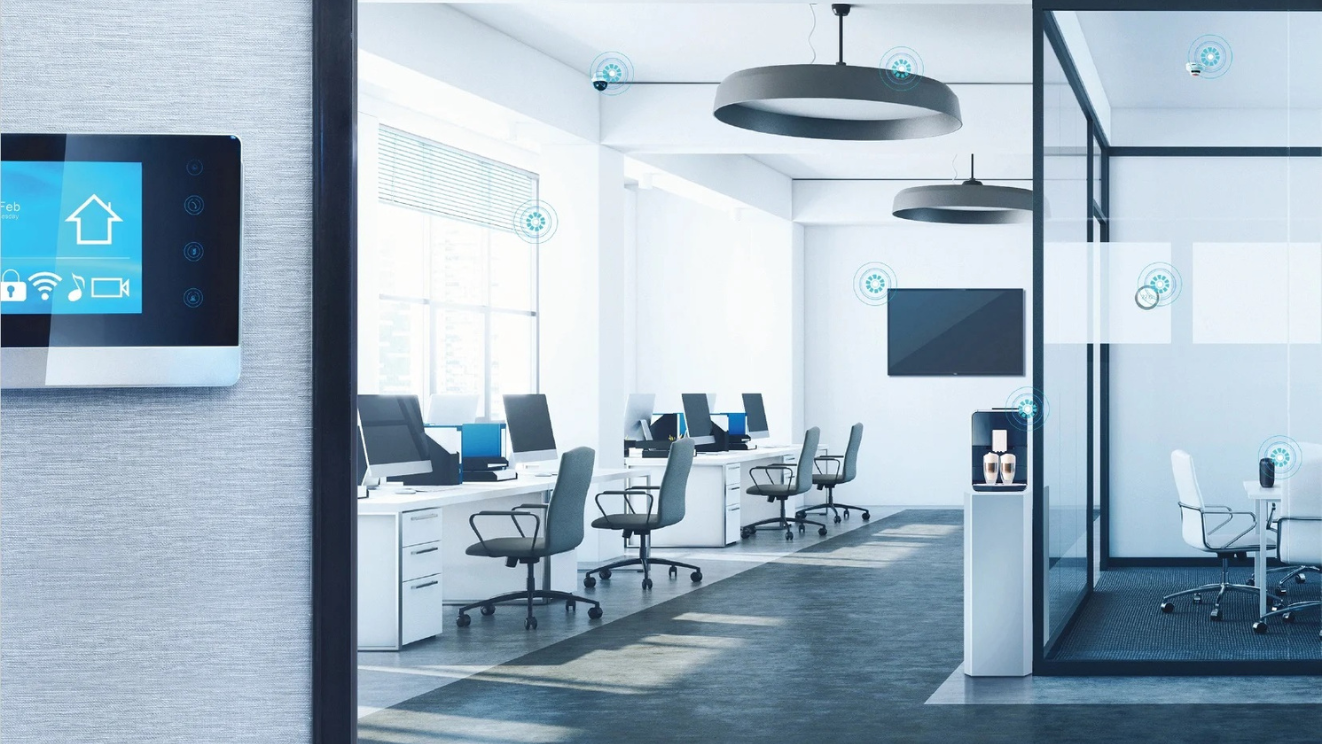Smart buildings, such as the edge business building in Amsterdam, use energy harvesting and edge intelligence to run as the greenest buildings in the world. The edge itself relies on 28,000 sensors to optimize the workspace for 25,000 employees with half as many desks. The smart sensors embedded in every corner of the building monitor and optimize all aspects of the building use, from the parking experience and workplace or “hot desk” allocation to heating, cleaning, air quality, and even watering the plants. Smart buildings, such as the edge, are answering an emerging need. When trends like work-from-home are forcing us to rethink the use of office space and homes, data from smart sensors and intelligent edge devices can help us optimize resources and overcome the limitations of space.

Fully energy-independent buildings, where every aspect of the use is optimized, sound like a futuristic idea, but there are already several smart buildings in active use, and new building projects are on the way. In fact, the smart buildings market is expected to grow with a 32% CAGR and reach a total of $43 billion by 2022. Furthermore, 80% of the companies preparing to return their staff to the office are expected to use space and utility IoT devices for enhanced safety, and more efficient use of resources as part of their return-to-work office strategy. Indeed, smart buildings seem to be the new “it” topic, but what exactly makes a building “smart,” and what features do smart buildings have in common?
Smart Use of Space and Resources
Commercial real estate was hit hard by the pandemic. As hotel lobbies and office spaces emptied, cities and building managers began to rethink use cases for the vacant space. Former commercial buildings and workspaces are being converted into living spaces and schools. But even before the pandemic, there was a realization of the imminent need for more resourceful building management and smarter use of space. Every unused square foot is estimated to cost a business around $33 per year, which does not sound like much but can quickly add up to tens of thousands of dollars a year. Buildings are also great polluters accounting for around 28% of global emissions.

Smarter building management requires usage data from every level of building use, and this is where edge AI solutions step in by offering both data collection and processing capacity. As we extend the battery life for wireless sensors to keep track of usage, utility, and movement around the smart building, we also expand the possibilities for collecting and processing diverse user data. Furthermore, equipping the sensors with edge AI will power us to take full advantage of the data produced by our buildings and their users by transforming the data into actionable insights.
Ultra-low power solutions with sub-threshold power-optimized technology allow us to install smart sensors in places we had no access to before. Previously, we had to decide between pulling wires to each sensor and preparing to change the battery every week; nowadays, we can simply install wireless sensors to rooftops, boiler rooms, and other challenging locations and only change the battery once a year during the regular building maintenance cycle. We can now bring automation, similarly seen on smart homes, into commercial building management.
Space-as-a-Service
Smart use of space and resources, such as energy, water, waste products, and heat, could result in a situation where we need less buildings in the world and where the buildings we have are near 100% use. Space-as-a-service is a paradigm shift in building management, where the role of commercial real estate managers has shifted from landlords to service providers. When we start understanding space as just another productivity tool, instead of an expense or asset in an investment portfolio, we can look at the commercial building management industry through a whole new frame. In short, space-as-a-service is a service model where the end products offered to the client have focused on productivity-enhancing solutions instead of just renting a standard office space.
The paradigm shift in commercial real estate management enables us to adapt flexibly to the changing environment and business needs. During the pandemic, the commercial real estate industry took hard hits as employers are reluctant to tie themselves up to costly rental agreements, and employees embrace work-from-home. The industry is in dire need of reinventing itself to regain profitability in the flex-work environment.
Smart Connected Devices and Systems
We cannot talk about smart buildings without talking about connected devices and systems. Structures are built to fulfill a purpose and provide their occupants the facility to perform their essential daily tasks. Therefore, smart buildings need to connect data points.

What exactly makes a building smart? Simply put, a smart building is intended to offer a better experience to the occupants with minimal resources wasted. The list of occupants includes the tenant, the building manager, building maintenance staff, and visitors. Each occupant will benefit from a smarter personalized user experience in their own way. For example, the heating system might get real-time signals from the outdoor temperature sensor and optimize the building temperature. The tenant and visitors will enjoy better productivity at an optimal temperature environment. The building manager will save on energy bills. The building maintenance will be alerted early about possible issues, such as exceptional humidity levels or discrepancies in temperature control. To make these connections work flawlessly, we need machine-to-machine and machine-to-human communication. Therefore, smart buildings are dependent on smart connected devices and systems.
How Ambiq Contributes
Ambiq’s ultra-low power multi-protocol Bluetooth Low Power wireless microcontrollers are at the heart of millions of edge devices that are the building blocks of the IoT world and smart building management.
Ambiq’s leading ultra-low power SoCs can support key technologies required by connected homes and smart buildings such as Bluetooth Low Energy. Future generations will include additional multi-protocol communications such as Bluetooth® Mesh, ANT+, RF4CE, and Zigbee®.
Built on our patented Sub-threshold Power Optimized Technology (SPOT®) platform, Ambiq’s products reduce the total system power consumption on the order of nanoamps for all battery-powered edge devices.
Simply put, our solutions enable edge intelligence everywhere.


